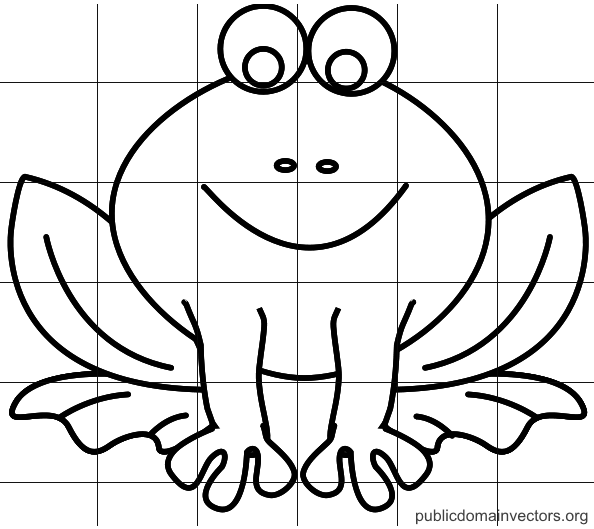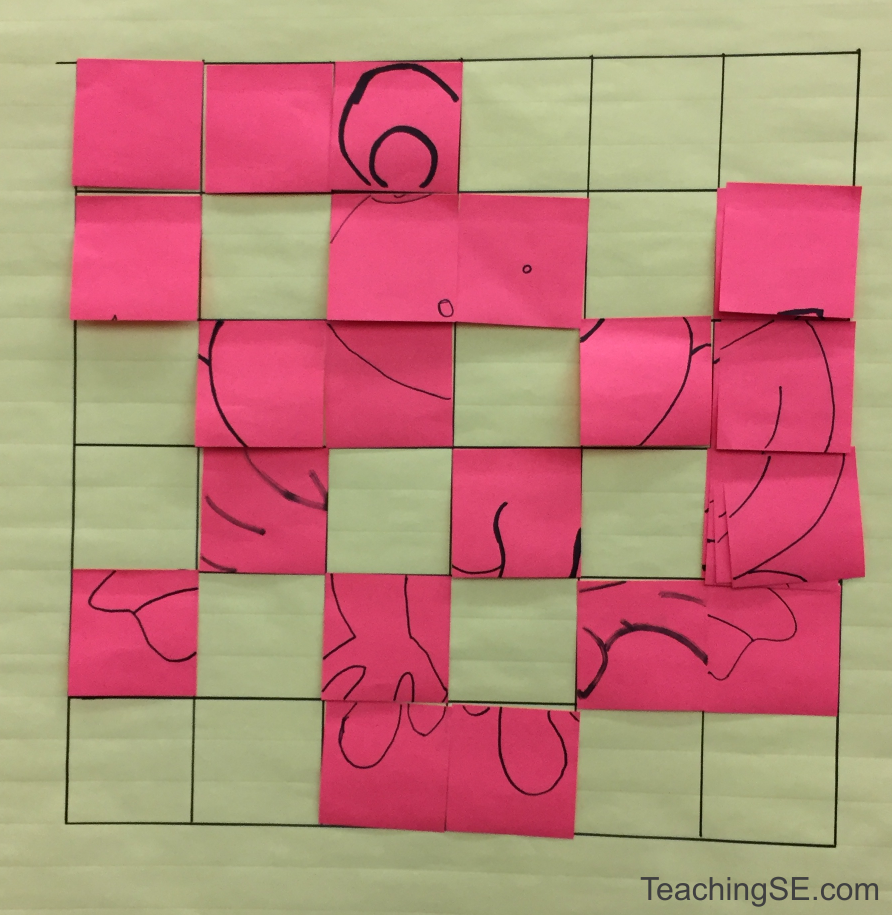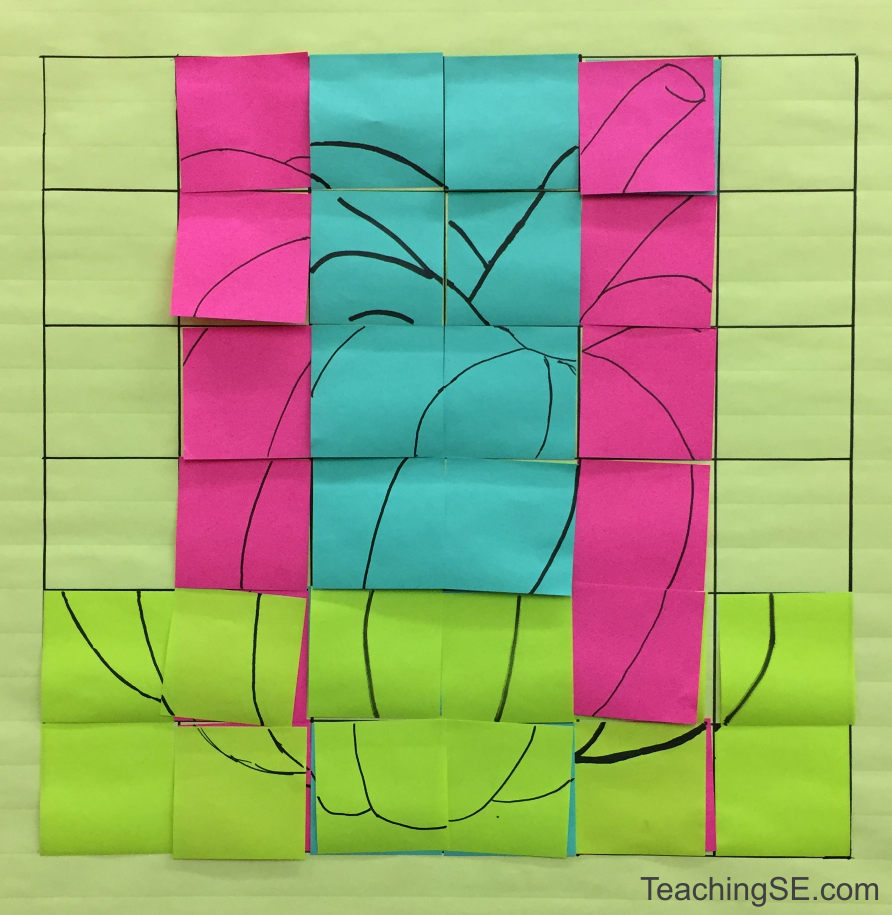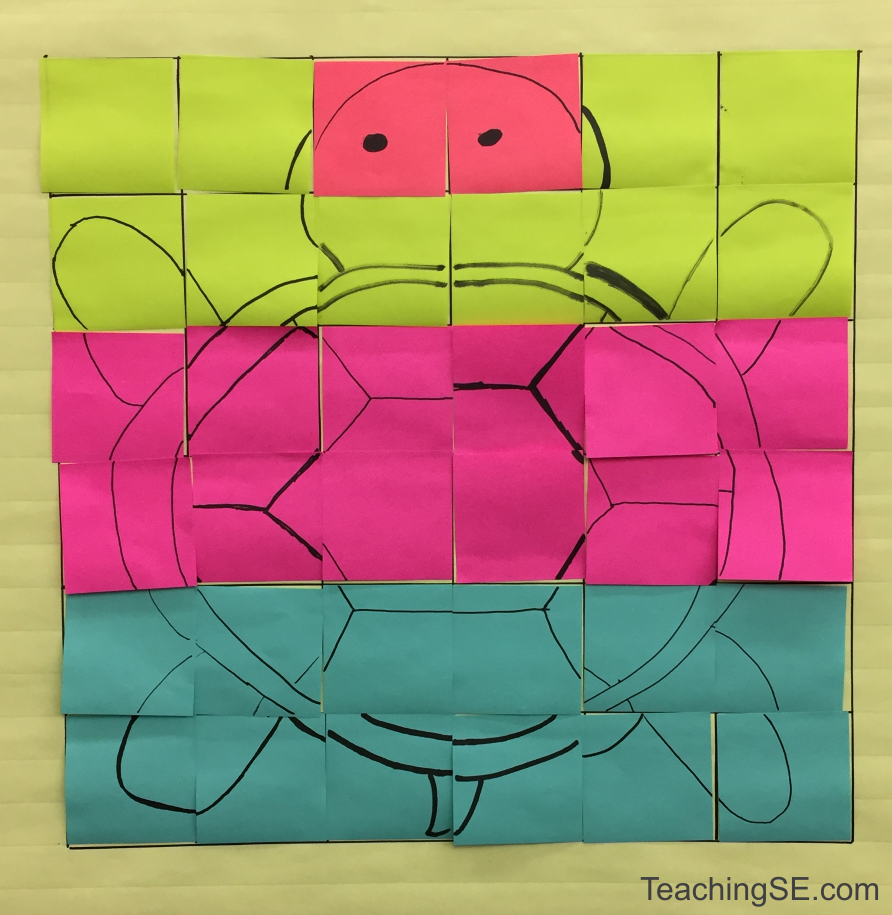Samuel A. Malachowsky
Senior Lecturer, Department of Software Engineering
Project Management Professional (PMP)

In this classroom activity, the difficulties associated with distributing project work between agile teams is demonstrated and resolved.
 Agile, Classroom Engagement, Classroom Activities
Agile, Classroom Engagement, Classroom Activities2017-03-23
Distributed/Scaled Agile Class Activity

A basic example of the line drawing and grid. In this case, the grid is appropriate for a class of 18 students
Because of the size of the modern Software Engineering project, development by a single 4-8 member Agile team is not only impractical, it's impossible. Using methods like Scrum-of-Scrums allows for expansion of Agile projects to multiple teams. This activity demonstrates the difficulties that can be encountered in a distributed-team model, and it resolves with a simple model for coordination between teams as well as a visual example of how this can play out. Materials needed include a few sheets of easel-pad paper (or access to a whiteboard), several pads of post-it-style notes, and markers. Steps are as follows:
Beforehand, select three simple line-drawings and, using basic image-editing software, overlay each image with a square grid relative to the class size (either one or two squares per student, defaulting to too few squares rather than too many squares per student if need be). These images will be shared with the class via an overhead projector or handout, and students will be individually responsible for recreating sections of the grid on post-it-style notes (which need to be available to them along with markers). Additionally, using a whiteboard or easel-pad, blank grids will need to be created onto which the students will place their completed drawing segments.

Note that several squares have multiple post-its, indicating duplicated effort
For the first part of the activity, students are shown the line drawing with grid overlay and given the following instructions:
- Each student must choose one or two (depending on class size, number of squares, etc.) squares and reproduce the lines on those squares on their post-it-style note.
- Students may not speak to others, plan with others, or see which squares others are completing.
- Students are given two minutes to complete this task.
- At the end of the time, students simultaneously place their post-it-style notes on the corresponding part of the grid. If the square is already occupied, they simply place their note atop the one that is already there.

Each color represents a different team. Note that there are still overlapping notes indicating duplicated effort
After the conclusion, a significant portion of the drawing will likely be missing, with some squares containing several stacked notes, representing wasted effort (a.k.a. "thrashing").
Moving into the second part, another grid drawing is presented to the class and the class is divided into (about) three teams, each of which receiving a different color of post-it-style note. Instructions are similar to the first effort, with the following changes:
- Students may communicate and coordinate within their team, but coordination between teams is forbidden.
When complete, this will most likely yield another incomplete picture, with color overlaps indicating duplicate effort.

Because the teams have coordinated beforehand, the task is completed efficiently with no duplicated effort
The third iteration includes the same rules as the second, but with one exception:
- One member of each team will participate in a coordination session beforehand, allowing the teams to each choose a different region to complete.
In most cases, this results in a complete drawing which includes little to no duplicate effort.
By tying this activity in with the concepts of distributed or scaled agile team, students gain a practical demonstration of how this takes place as well as the wasted or duplicated effort that is often associated with this type of environment.
Additional Articles:
Engineering a More Effective Resume Video 
Watch this video to learn how Engineers should approach adding skills and experience to their resume.
( Resume, Career, 2020-09-25)
Resume, Career, 2020-09-25)
Three Things You Should Know About Software Engineers 
Here are three things that you should know about the way Software Engineers approach the world around them
( Career, 2019-03-18)
Career, 2019-03-18)